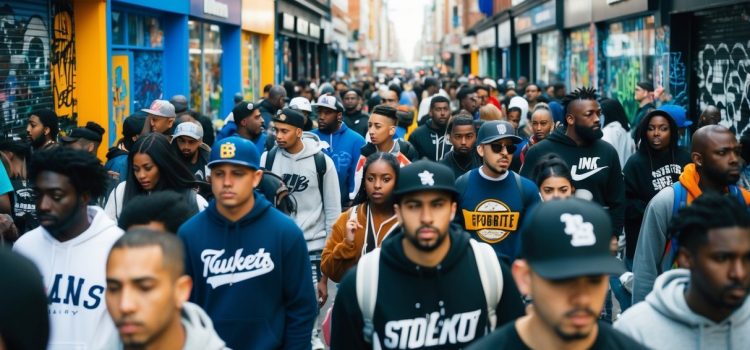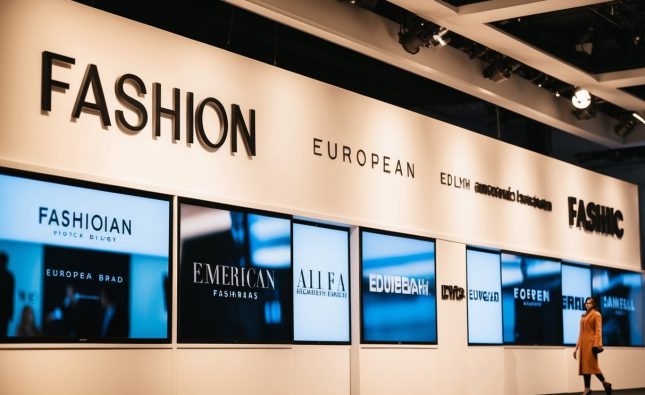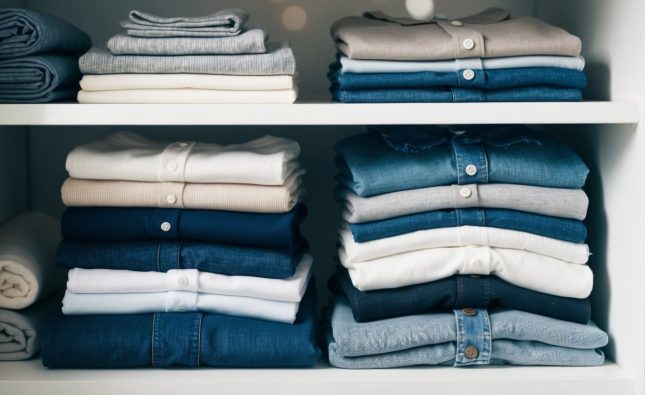
Streetwear has evolved into a dominant force in contemporary fashion, blending elements of urban culture with high-end aesthetics. Some of the most popular streetwear brands include Supreme, Off-White, and Nike, each of which has made a significant impact on both style and social consciousness. These brands capture the essence of street culture while maintaining a strong connection with their audiences through unique designs and strategic collaborations.

The appeal of streetwear lies not only in its fashion-forward designs but also in its cultural significance. Many brands prioritize limited releases and exclusivity, which creates a sense of urgency and desirability within the community. As a result, streetwear continues to attract a diverse following, from fashion enthusiasts to everyday consumers seeking to make a statement.
Understanding the landscape of streetwear brands is essential for anyone looking to stay ahead in fashion trends. This exploration reveals how these brands shape identity and influence culture, offering insights into why they resonate so strongly with individuals today.
The Rise of Streetwear
Streetwear has transformed from niche subculture to a dominant force in global fashion. Its growth can be attributed to various cultural influences and the evolution of fashion trends.
Cultural Influences
Streetwear’s rise is deeply rooted in urban culture, primarily drawing from skateboarding, hip-hop, and surf scenes. These communities valued individuality and self-expression, which resonated with youth culture.
Brands emerged from these environments, leveraging social issues, music, and art. For instance, Supreme began as a skate shop and became a cultural icon, influencing how streetwear is perceived today.
Social media platforms also played a significant role. The ability to share and promote unique styles allowed brands and individuals to reach wider audiences. Influencers and celebrities further legitimized streetwear, creating a desire for exclusive pieces.
Fashion Evolution
Streetwear has evolved significantly since its inception in the late 20th century. Initially defined by comfortable and casual attire, it now incorporates high fashion elements. Collaborations between streetwear brands and luxury labels have blurred the lines between casual and upscale fashion.
Notable partnerships, such as Palace Skateboards with Adidas, showcase this shift. These collaborations bring street culture into luxury spaces, appealing to diverse consumers.
Moreover, the integration of technology and sustainable practices has influenced modern streetwear. Brands increasingly focus on eco-friendly materials while maintaining style. As streetwear continues to adapt, it remains a dynamic and influential aspect of contemporary fashion.
Top Streetwear Brands
Streetwear brands have gained immense popularity, each establishing a unique identity and cultural relevance. The following brands represent some of the most influential in streetwear, defined by their distinctive aesthetics and community engagement.
Supreme
Supreme stands as a cornerstone of streetwear culture. Launched in 1994 in New York City, it became renowned for its box logo and collaborations with high-profile artists and designers. The brand’s limited releases create a sense of exclusivity, driving demand.
Items range from graphic tees to skateboards and accessories. Supreme’s pricing strategy often elevates its merchandise to luxury status. This unique blend of skate culture and street fashion has made it immensely popular among collectors and enthusiasts alike.
Off-White
Founded by designer Virgil Abloh in 2012, Off-White has significantly impacted the fashion landscape. Known for its distinctive use of quotation marks, bold graphics, and industrial motifs, the brand straddles the line between luxury and streetwear.
Off-White’s diverse product range includes apparel, footwear, and accessories, often featuring deconstructed designs. Collaborations with Nike and other high-profile brands have solidified its reputation, making it a favorite among celebrities and trendsetters.
A Bathing Ape
A Bathing Ape, often abbreviated as BAPE, originated in Japan in 1993. Its playful designs and vibrant patterns resonate with streetwear aficionados. The brand became famous for its iconic Ape logo and camouflage patterns.
BAPE’s limited-edition items create a high demand in the resale market, which has helped to maintain its status. Collaborations with global brands and pop culture icons further enhance its visibility and appeal in the streetwear scene.
Stüssy
Stüssy is credited with pioneering streetwear in the 1980s. Founded by surfboard shaper Shawn Stussy, the brand reflects a laid-back, California lifestyle. The signature Stüssy logo and graphic tees are instantly recognizable.
The brand has evolved to include a variety of apparel, from casual wear to accessories. Stüssy’s consistent collaboration with artists and its integration into different subcultures have helped retain its authenticity and relevance.
Palace
Palace Skateboards debuted in 2009 and quickly gained traction in the streetwear community. Known for its bold graphics and British skate culture influence, Palace appeals to a younger audience seeking authenticity in fashion.
The brand’s whimsical approach manifests in its seasonal collections, featuring eye-catching tees, jackets, and skateboarding gear. Palace has also engaged in notable collaborations, enhancing its visibility and desired status within the streetwear hierarchy.
Design and Aesthetics

The design and aesthetics of streetwear reflect creativity and cultural influences. Key elements include graphic tees, unique sneakers, and impactful collaborations that resonate with fans and collectors.
Graphic Tees and Logos
Graphic tees are a cornerstone of streetwear fashion. They often feature bold designs, vibrant colors, and striking imagery that convey messages or align with subcultures. Logos play a significant role, with brands like Supreme and Off-White utilizing recognizable symbols to create a sense of identity and exclusivity.
Common themes include:
- Bold graphics
- Minimalist designs
- Cultural references
Streetwear enthusiasts frequently collect limited edition tees, making them not only fashion items but also status symbols. Brands often drop seasonal collections that attract significant attention from the community.
Sneakers and Accessories
Sneakers are essential components of streetwear aesthetics. Brands like Nike and Adidas dominate this space, focusing on both performance and style. Unique silhouettes, innovative materials, and eye-catching colorways define the sneaker offerings.
Popular features include:
- High-tops and low-tops
- Chunky soles
- Collaborations with designers
Accessories like hats, bags, and jewelry complete outfits and allow for personal expression. Streetwear pieces typically feature logos or designs that mirror the style of the clothing, creating a cohesive look.
Collaborations and Drops
Collaborations between streetwear brands and high-fashion designers or artists create buzz and exclusivity. These projects often result in limited-edition pieces that attract both fashion enthusiasts and collectors.
Notable examples:
- Supreme x Louis Vuitton
- Travis Scott x Nike
The anticipation surrounding drops is a defining characteristic of streetwear culture. Fans often wait in line or participate in online raffles to secure these limited items, reinforcing the connection between design, exclusivity, and consumer culture.
Consumer Culture
Streetwear has evolved into a significant consumer culture, shaped by individuality, social status, and the trendy allure of the market. Factors such as hype, the influence of social media, and the dynamics of the resale market play essential roles in this cultural phenomenon.
Hype and Exclusivity
Hype is a driving force in streetwear consumer culture. Limited releases and collaborations create a sense of urgency, pushing consumers to act quickly for fear of missing out. Brands like Supreme and Off-White capitalize on this by orchestrating drops that highlight their exclusivity.
Strategies for Creating Hype:
- Scarcity: Fewer items increase demand.
- Collaborations: Partnerships with celebrities or brands enhance appeal.
- Anticipation: Teasers and countdowns build excitement.
This atmosphere fosters a competitive spirit, leading consumers to form passionate communities around brand launches and exclusive items.
Social Media Impact
Social media platforms have transformed how streetwear brands interact with consumers. Instagram, Twitter, and TikTok allow brands to showcase drops and collaborations instantaneously, reaching a vast audience.
Key Effects:
- Influencer Marketing: Many consumers look to social media influencers for style inspiration.
- Brand Engagement: Social media enables direct interaction between brands and consumers, enhancing loyalty.
- Trends: Fast dissemination of trends leads to rapid buying decisions based on viral content.
This digital landscape allows for quick reactions to fashion trends and further drives consumer engagement.
Resale Market Dynamics
The resale market is a significant aspect of streetwear culture, frequently driven by scarcity and demand. Platforms like StockX and GOAT allow consumers to buy and sell limited sneakers and apparel.
Resale Market Characteristics:
- Value Appreciation: Some items appreciate in value considerably after release, turning them into investment pieces.
- Accessibility: Resale increases accessibility to exclusive items that were originally sold out.
- Cultural Significance: Owning sought-after pieces can elevate social status among peers.
This market creates an ecosystem where initial buyers and resellers interact, influencing brand perception and consumer behavior.












